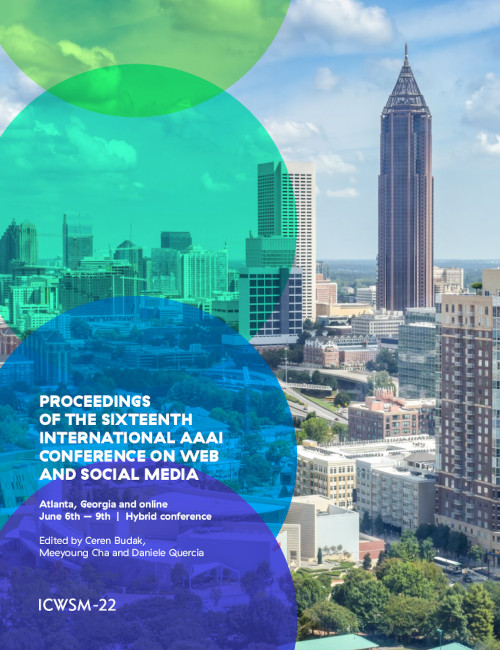Whose Advantage? Measuring Attention Dynamics across YouTube and Twitter on Controversial Topics
DOI:
https://doi.org/10.1609/icwsm.v16i1.19316Keywords:
Qualitative and quantitative studies of social media, Organizational and group behavior mediated by social media; interpersonal communication mediated by social media, Social network analysis; communities identification; expertise and authority discovery, Engagement, motivations, incentives, and gamification.Abstract
The ideological asymmetries have been recently observed in contested online spaces, where conservative voices seem to be relatively more pronounced even though liberals are known to have the population advantage on digital platforms. Most prior research, however, focused on either one single platform or one single political topic. Whether an ideological group garners more attention across platforms and/or topics, and how the attention dynamics evolve over time, have not been explored. In this work, we present a quantitative study that links collective attention across two social platforms -- YouTube and Twitter, centered on online activities surrounding popular videos of three controversial political topics including Abortion, Gun control, and Black Lives Matter over 16 months. We propose several sets of video-centric metrics to characterize how online attention is accumulated for different ideological groups. We find that neither side is on a winning streak: left-leaning videos are overall more viewed, more engaging, but less tweeted than right-leaning videos. The attention time series unfold quicker for left-leaning videos, but span a longer time for right-leaning videos. Network analysis on the early adopters and tweet cascades show that the information diffusion for left-leaning videos tends to involve centralized actors; while that for right-leaning videos starts earlier in the attention lifecycle. In sum, our findings go beyond the static picture of ideological asymmetries in digital spaces and provide a set of methods to quantify attention dynamics across different social platforms.Downloads
Published
2022-05-31
How to Cite
Lee, J., Wu, S., Ertugrul, A. M., Lin, Y.-R., & Xie, L. (2022). Whose Advantage? Measuring Attention Dynamics across YouTube and Twitter on Controversial Topics. Proceedings of the International AAAI Conference on Web and Social Media, 16(1), 573-583. https://doi.org/10.1609/icwsm.v16i1.19316
Issue
Section
Full Papers

